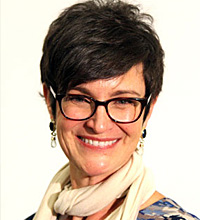Family Governance at Work: Organizing for new product development in family SMEs
(Authors: Alfredo De Massis, Josip Kotlar, Federico Frattini, James J. Chrisman, and Mattias Nordqvist)
Research Applied précis prepared by Kim Schneider Malek, Family Enterprise Alliance, LLC
Innovation is more than just a hot topic for start-up companies. Innovation, along with creativity and entrepreneurship (I.C.E), is a core foundation of any business seeking to come alive, survive, and thrive with a distinct competitive advantage. While diverse types of innovation exist, product innovation is considered a key component of organizational change, growth, and performance in any business, including family businesses. For this reason the article is valuable to a variety of practitioners and family firm members.
Innovation-based research and literature, both of which are becoming plentiful, are recently experiencing an increase in attention to product innovation specifically in family firms. The body of research explored in this insightful article suggests that the distinct attributes of family governance, specifically centralized authority structures, incentive for parsimonious use of resources, and asymmetrical accountability norms can impact family firms’ innovativeness. To a practitioner or family firm member, this likely presents alleged proof in the form of less engagement in research and development investments, fewer technology acquisitions, and less open innovation than might be noted in non-family firms.
That being said, there are suggestions that family firms continue to flourish because, or even despite the fact that, they follow different innovation strategies. One such example is that they are able to change strategies more rapidly because of their concentrated control. It is also suggested that since family firms follow different strategies, they likely use different organizational designs to implement their innovation programs. A simple perception is that family firms frequently do more with less.
Through this article, we realize the researchers are trying to understand more about how family firms implement their innovation strategies and how innovation activities can be organized at the micro-level to fit their governance attributes. The study on which the article is centered aims at expanding the research to explore the concept that family firms can be highly innovative while still maintaining a strong family character and that lower innovation inputs do not necessarily translate into lower innovation outputs.
As a guide for research and exploration, the authors addressed the following question: How do family firms design new product development (NPD) programs that fit their governance systems and perform at high levels? They did this by looking at six case studies of a variety of innovation-dedicated small-and medium-sized enterprises (SME) that were highly entrenched family firms (meaning they were active in ownership and management to an extreme level). Each had diverse levels of success, employee populations of 40-430, diverse industries and dedicated multi-year innovation project budgets. (See the article and tables 1 through 4 for more details.) Researchers asked each of the family firms the following:
- How they are organized?
- Who does/did the work?
- How teams were/are formed?
- How leaders evolved into their positions?
- What types of incentives were available, to whom, and why?
The major findings in the study (as summarized in Table 5) suggest that the product innovation performance of family SMEs depends on new product development team design, leadership and championing roles, and incentives:
- In terms of new product development team design, the findings were that higher performing family SMEs had part-time participants who also retained their initial position and boss. (see Table 6 for more details)
- Unique to the higher performing family firms in this study, differentiating two main types of new product development innovation leadership was key. There was that of the technical project leader (someone highly skilled and likely outside of the family) and that of the project champion (someone with the political and relationship capital and likely inside of the ownership family). Both are essential. Less common that the same person will be right for both. (See Table 7 for more details)
- Finally, incentives were the third key construct. The higher performing family SMEs in the study offered intrinsic incentives such as involvement opportunities and a chance to make a valuable contribution to the greater good to the company’s collective functioning, continuity, and competitive advantage (see Table 8 for more details).
How do family enterprise advisors utilize these findings? Here are a few suggestions:
- Be careful about what you advise; ask yourself what have you done to challenge your own assumptions and biases about family firms and their product innovation strategies?
- Help the client promote and spread an intentional culture of innovation.
- Create a model, if you have not already done so, that allows you to systemically and consistently put I.C.E. (innovation, creativity, and entrepreneurship) in the veins of the family firm.
- Design a checklist that helps you assess how well the design of new product development program fits their governance attributes.
- Help family firms establish a rising generation development plan for future new product innovation leadership candidates and project champions. Consider augmenting this with experiential learning at a custom family firm innovation camp.
For family SMEs who want to put these challenges in practices, explore the following together:
- What are your values regarding innovation and investment of resources in innovation? What is your systemic commitment to innovation as a family relative to those values?
- What are your unique governing characteristics? How do you make decisions — innovation-inspired, risk-forward, collaboratively, etc.?
- What is the risk of doing nothing to invest in an intentional culture of innovation?
- Who on the family council serves as the innovation champion? Do you need/have an innovation committee? How will they be groomed?
- Who in the family has the potential for new product innovation project leadership? How will you know if a candidate is ready?
Our role as advisors is to serve as bridges to close the gaps between research and practice in areas such as this. While this article and the specifics of the study relate to innovation relative to new product development, as practitioners, we must ask ourselves how we can help family firm clients put I.C.E. (innovation, creativity, and entrepreneurship) in their veins throughout the core of all of the enterprise. More research is needed and being pursued. The authors want to test their findings and ask that family business advisors contribute to their data base through their own stories and action research.
To listen to a podcast interview with co-author Josip Kotlar, go here.
About the contributor
 Kim Schneider Malek is founder and president of Family Enterprise Alliance. She is an FFI Fellow, a member of the GEN faculty and the recipient of the 2014 Barbara Hollander Award. Kim can be reached at kim@advancingfamilyenterprise.com.
Kim Schneider Malek is founder and president of Family Enterprise Alliance. She is an FFI Fellow, a member of the GEN faculty and the recipient of the 2014 Barbara Hollander Award. Kim can be reached at kim@advancingfamilyenterprise.com.




